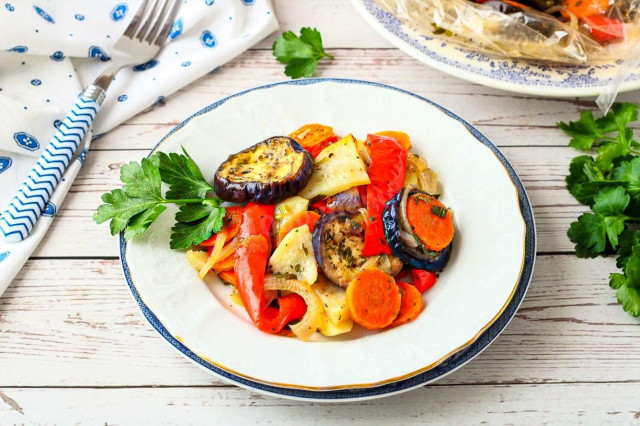Composition / ingredients
Step-by-step cooking
Step 1:

Prepare the necessary ingredients. Take wheat flour of the highest grade. The success of baking will largely depend on this.
Step 2:

Preheat the water to 37-40 degrees, but no more, because in a hot environment the yeast will simply die. Pour dry yeast into a small container, fill them with warm water (about 50 ml). Leave for 15 minutes in a warm place. If the yeast is not expired and not spoiled, a foam cap will appear on the surface of the sponge.
Step 3:

Sift the flour into a deep bowl. Its quantity may be more or less than specified. It all depends on its properties. It is necessary to focus on the desired thick consistency of the dough.
Step 4:

Add sugar, salt. Pour in the activated yeast. Mix everything together.
Step 5:
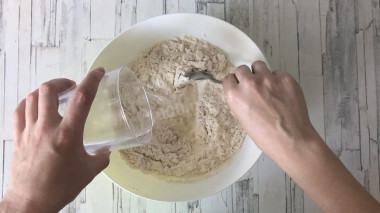
Pour the remaining amount of warm water into the dough.
Step 6:

Knead a moist, thick and rather sticky dough.
Step 7:

Cover the bowl with a waffle towel and leave in a warm place without drafts for 40 minutes. During this time, the volume of the test will increase 2-3 times.
Step 8:
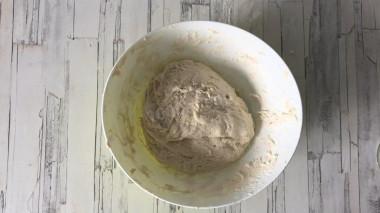
Transfer the risen dough to the work surface and knead it with your hands greased with vegetable oil. The filling is needed in order to expel carbon dioxide from the dough, which prevents the fermentation process.
Step 9:

Form a ball from the dough, return it to the bowl and leave it in a warm place under a towel for another 40 minutes. You can hide it in the oven, warmed up to 30-40 degrees. After the time has elapsed, the dough should be kneaded again.
Step 10:
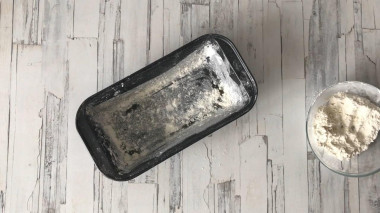
Smear the bottom and walls of a heat-resistant mold (I have a rectangular one) with vegetable oil with a high smoking temperature and sprinkle with flour.
Step 11:
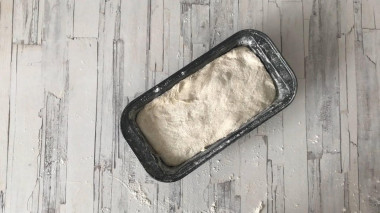
Put the dough into the mold. Sprinkle the top of the loaf with flour so that its surface does not curl during proofing.
Step 12:
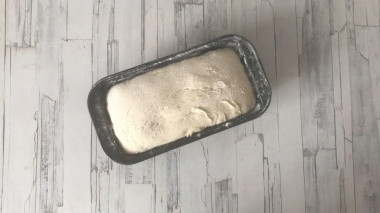
We put the form with the dough back in a warm place for 30 minutes. You can hide it in the oven, warmed up to 30-40 degrees.
Step 13:
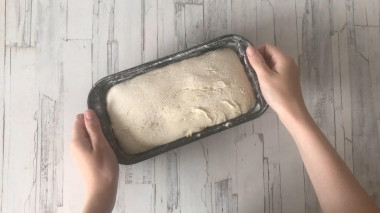
Preheat the oven to 190 degrees in advance. Bake the bread for about 40 minutes. It is important to keep in mind that the baking time and temperature may differ from those indicated, since each oven bakes differently. Focus on the specifics of your technique. When the top of the bread is browned, pierce it with a wooden skewer, if it comes out dry, then take the baking dish out of the oven. Sprinkle the top of the loaf with hot water, cover with a towel until completely cooled.
Important! Using dry yeast, it should be borne in mind that they occur in two forms: active and instant.
Active dry yeast looks like beads or small balls. Before applying them, they must be brought out of "sleep mode". To do this, the active yeast is diluted in warm sweet water, milk or whey. The resulting bubbles, foam or "cap" indicate that the yeast is ready for further use. Active dry yeast must be brought to complete dissolution in the liquid, otherwise, due to the remaining grains, the dough may not rise and the baking will be spoiled (yeast grains that have not dissolved in the liquid and got into the dough will not disperse on their own, which means they will not work).
Instant dry yeast is easier to use. They do not need to be activated before use. Such yeast, along with other ingredients, is simply added to the dough. As a result, the baking time is reduced.
It should also be remembered that both types of dry yeast may differ in their activity from different manufacturers.
To make the bread more airy, it rose better when baking and did not dry out, I advise you to put a small baking tray with water on the bottom of the oven.
Be prepared for the fact that you may need a little more flour, or, conversely, less than indicated in the recipe. You need to focus on how the dough should turn out (soft, dense, liquid, etc.). There is a lot of useful information about why flour of the same variety can have completely different properties, read this article
Keep in mind that everyone's ovens are different. The temperature and cooking time may differ from those specified in the recipe. To make any baked dish successful, use useful information in the article about ovens here
If necessary, the yeast dough can be frozen. To do this, transfer it to a hermetically sealed container and put it in the freezer. The dough can be stored for about 3-4 months at a temperature of -18 degrees. It should be defrosted on the bottom shelf of the refrigerator.
Caloric content of the products possible in the composition of the dish
- Granulated sugar - 398 kcal/100g
- Sugar - 398 kcal/100g
- Vegetable oil - 873 kcal/100g
- Salt - 0 kcal/100g
- Water - 0 kcal/100g
- Wheat flour - 325 kcal/100g
- Dry yeast - 410 kcal/100g



